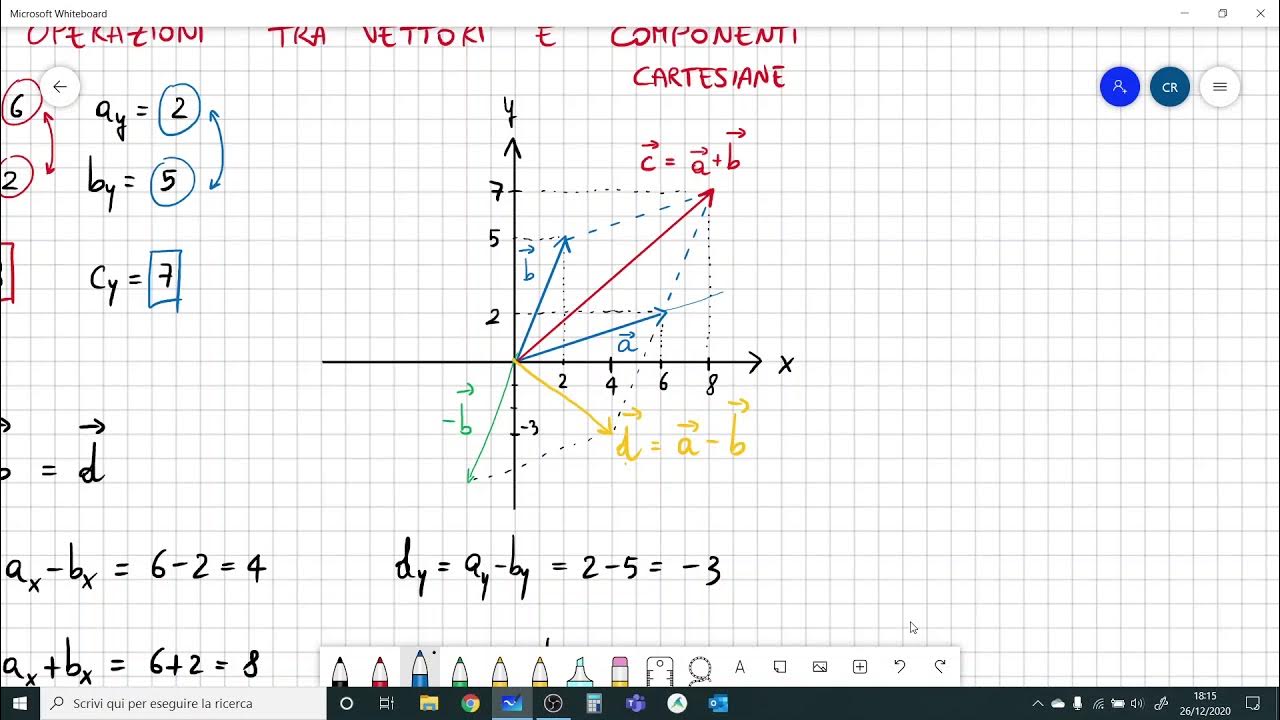Suma y resta en notación científica
Summary
TLDRThe video explains how to perform addition and subtraction using scientific notation. It emphasizes the importance of aligning the exponents of base 10 before performing operations. The process involves adjusting one term's exponent to match the other, moving decimal points accordingly. Several examples are provided, illustrating how to convert numbers to scientific notation, perform operations, and return results in proper notation. The lesson highlights key concepts like adjusting decimal points, dealing with negative exponents, and ensuring the final result falls within the correct range for scientific notation.
Takeaways
- 🔢 To add or subtract in scientific notation, the exponents of base 10 must be the same.
- 🔄 You can adjust one term by converting its exponent to match the other, such as converting 10^3 to 10^5.
- ⚖️ When changing the exponent, adjust the decimal point accordingly to maintain the original value.
- ➕ After aligning the exponents, you can perform the addition or subtraction of the coefficients.
- 📏 In scientific notation, the coefficient must be a number between 1 and 10.
- 📉 Moving the decimal point left increases the exponent, while moving it right decreases the exponent.
- ✖️ When multiplying terms in scientific notation, adjust for the decimal shifts based on the exponents.
- ➖ To subtract terms with different exponents, align the exponents first, then subtract the coefficients.
- 💡 After subtraction, ensure the result remains in proper scientific notation by adjusting the decimal point if necessary.
- 📝 In all operations, remember to adjust the decimal based on the differences in exponents for accurate scientific notation results.
Q & A
What needs to be equal for adding or subtracting in scientific notation?
-The exponents of the base 10 must be equal before performing addition or subtraction in scientific notation.
How can you make the exponents of 39.12 x 10^3 and 32.4 x 10^5 equal?
-You can convert 39.12 x 10^3 to 0.3912 x 10^5 by adjusting the decimal point and increasing the exponent by 2.
What happens when you add or subtract numbers in scientific notation with unequal exponents?
-You must first adjust one of the numbers so that the exponents are equal before performing the operation.
How do you adjust the decimal point when converting 39.12 x 10^3 to match the exponent of 10^5?
-You move the decimal point two places to the left, converting 39.12 x 10^3 into 0.3912 x 10^5.
What is the result of adding 0.3912 x 10^5 and 32.4 x 10^5?
-The sum is 32.7912 x 10^5.
How do you convert 0.0005 to scientific notation?
-Move the decimal point three places to the right, giving you 5 x 10^-4.
What is the difference between 5 x 10^-3 and 0.8 x 10^-3?
-The difference is 4.2 x 10^-3.
How do you subtract 232.47 x 10^-4 from 12.90081 x 10^-5?
-First, adjust 232.47 x 10^-4 to 23.247 x 10^-5 to make the exponents equal, then subtract to get 23.011719 x 10^-5.
How do you convert 23.011719 x 10^-5 to proper scientific notation?
-Move the decimal point three places to the left, resulting in 2.3011719 x 10^-2.
What is the final result of adding 1.48 x 10^6 and 3 x 10^8 in scientific notation?
-After converting 1.48 x 10^6 to 0.0148 x 10^8, the sum is approximately 3.0148 x 10^8.
Outlines

此内容仅限付费用户访问。 请升级后访问。
立即升级Mindmap

此内容仅限付费用户访问。 请升级后访问。
立即升级Keywords

此内容仅限付费用户访问。 请升级后访问。
立即升级Highlights

此内容仅限付费用户访问。 请升级后访问。
立即升级Transcripts

此内容仅限付费用户访问。 请升级后访问。
立即升级浏览更多相关视频

Besaran, Satuan, Dimensi, dan Pengukuran • Part 3: Bentuk Baku / Notasi Ilmiah

Scientific Notation and Significant Figures (1.7)

Operazioni tra vettori in componenti cartesiane

FISIKA KELAS X : KONSEP ANGKA PENTING DAN NOTASI ILMIAH

Addition and subtraction with significant figures | Decimals | Pre-Algebra | Khan Academy

Significant Figures and Scientific Notation
5.0 / 5 (0 votes)
